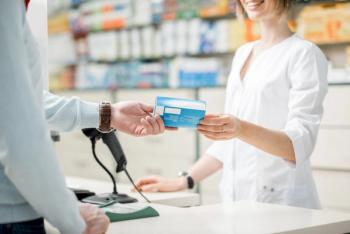
Health Care Spending Has Shot Back Up to Pre-Pandemic Levels
The average annual healthcare spending for people with employer-sponsored insurance spending increased from $5,630 in 2020 to $6,467 in 2021. After decreasing in 2020, per person healthcare spending increased 15%.
After healthcare spending decreased in 2020 due to the COVID-19 pandemic, the downfall of expenditures took a turn in 2021 back to pre-pandemic levels.
According to the latest annual Health Care Cost and Utilization Report by Health Care Cost Institute (HCCI), the average annual healthcare spending for people with employer-sponsored insurance spending increased to $6,467 in 2021 from $5,630 in 2020. Per person healthcare spending increased 15% in 2021, following a 4% decrease in 2020.
This year’s report (2017–2021) examined 5-year cumulative trends in healthcare spending for individuals with employer-sponsored insurance. Data collected is based on claims from commercial payers including Aetna, Humana, Kaiser Permanente and Blue Health Intelligence.
In 2020, lower use of healthcare services led to the first decline in per person healthcare in over 12 years, said Katie Martin, president and CEO of HCCI in the report passage. That decline in utilization, however, was concentrated in the early months of the pandemic. By mid-2020, survey data showed use and spending had largely returned to pre-pandemic levels.
Overall, prices grew close to 14% over the 2017-2021 period while use grew just over 7%, Martin said. The largest growth in prices was for inpatient hospital services, which grew 28% even as use declined over the 5-year period. Growth in healthcare prices, and particularly in hospital prices, remains a persistent challenge to access and affordability, she added.
Drug spending was also analyzed in the report, and per-person spending on prescription drugs, based on the cost at the point-of-sale, rose 29% between 2017 and 2021.
Results shared that spending increased the most on immunocological therapies, which saw the largest price increases. Following for spending increase was hormone therapies like insulin, birth control and thyroid condition treatments.
As for insurance premiums, now, the increase seems to be riding the curve higher as a KFF analysis in Fall of 2022 shared the average annual premiums in 2022 were roughly around $7,911 for single, employer-based coverage.
As healthcare costs continue to rise in 2023 due to inflation, we may see a decrease in care utilization once again, but all for different reasons than those in the peak of the pandemic.
In another KFF analysis, nearly four of 10 Americans said they had put off care in
Cost of treatments is also likely to rise next year as hospitals will raise their rates, said Sean Duffy, co-founder and chief executive of Omada Health, in the analysis. The company’s employees were already starting to see an increase in patients wrestling with how to pay for medicine and healthy food.
Newsletter
Pharmacy practice is always changing. Stay ahead of the curve with the Drug Topics newsletter and get the latest drug information, industry trends, and patient care tips.




































































































































